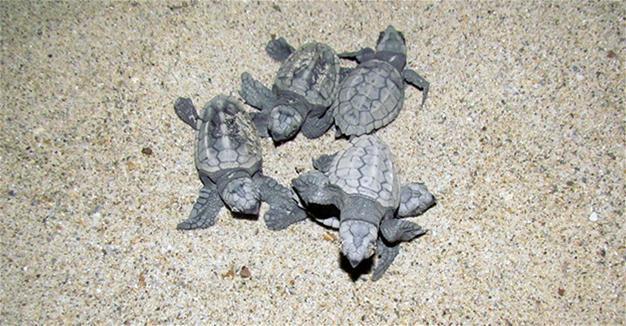Caretta carettas start spawning on Turkey’s İztuzu beach
MUĞLA – Anadolu Agency

Endangered caretta carettas have started spawning on İztuzu beach in the western province of Muğla’s Ortaca district.
Caretta carettas leave their eggs in 50-60-centimeter-deep holes. The incubation period is nearly 50 days and then baby turtles reach the sea.
The Sea Turtles Research, Rescue and Rehabilitation Center (DEKAMER) takes measures to prevent caretta carettas from having problems during this process, while the local Muğla Sıtkı Koçman University carries out beach protection and research works in the field.
Pamukkale University academic and DEKAMER director Professor Yakup Kaska said they carried out works every year on the beach for the protection of turtles with help from the Ministry of Environment and Urbanization.
Kaska said caretta carettas’ incubation period generally started in May.
“We found that the first nest was on İztuzu beach in the Mediterranean. We have so far found two nests. Our teams started determining and protecting the nests,” he added.
Kaska said a female caretta caretta could nest once in two weeks and between three-five times in a season, and the process continued until the end of September.
He said that baby turtles started coming out in 50 days.
“Our beaches are under protection between May and September. Each nest is surrounded by a cage on the beach so foxes and other animals cannot damage the eggs. We try to send the highest number of baby turtles to the sea,” he said.
Kaska also said they showed a sample model in the center to those who are curious about the nests of the sea turtles.
“The center meets an important need of Turkey for the care of wounded caretta carettas. In the past, only nests and the turtles were protected but in recent years the center has been treating the wounded turtles and then they are sent to their natural environment,” he added.
Kaska said the caretta carettas were harmed the most by fishing lines and speed boat motors, and asked people to be more careful in the habitats of these turtles.
Nests under protection
DEKAMER official Şenol Menzek said they were pleased to find the year’s first nest, adding that they took the nest under protection and the number of nests would increase from now on.
“There were 628 nests last year and we expect more than 500 nests this year. The incubation time is between 45 days and two months. We open the nest in the end of two months and get the babies out of the nest. We count the eggs and find a data,” Menzek said.
Esra Atalay Tuna, who is studying for master’s at the Middle East Technical University, said she worked for DEKAMER one week ago as a volunteer. She said she would work on the İztuzu beach until mid-May, adding that they woke up at 5 a.m. every morning to find the nests.
“Saving a nest means saving 1,000 caretta carettas. This is very important because only one out of 1,000 caretta caretta becomes fully grown. It then returns to the coast where it is born and reproduces,” Tuna said.
 Endangered caretta carettas have started spawning on İztuzu beach in the western province of Muğla’s Ortaca district.
Endangered caretta carettas have started spawning on İztuzu beach in the western province of Muğla’s Ortaca district.